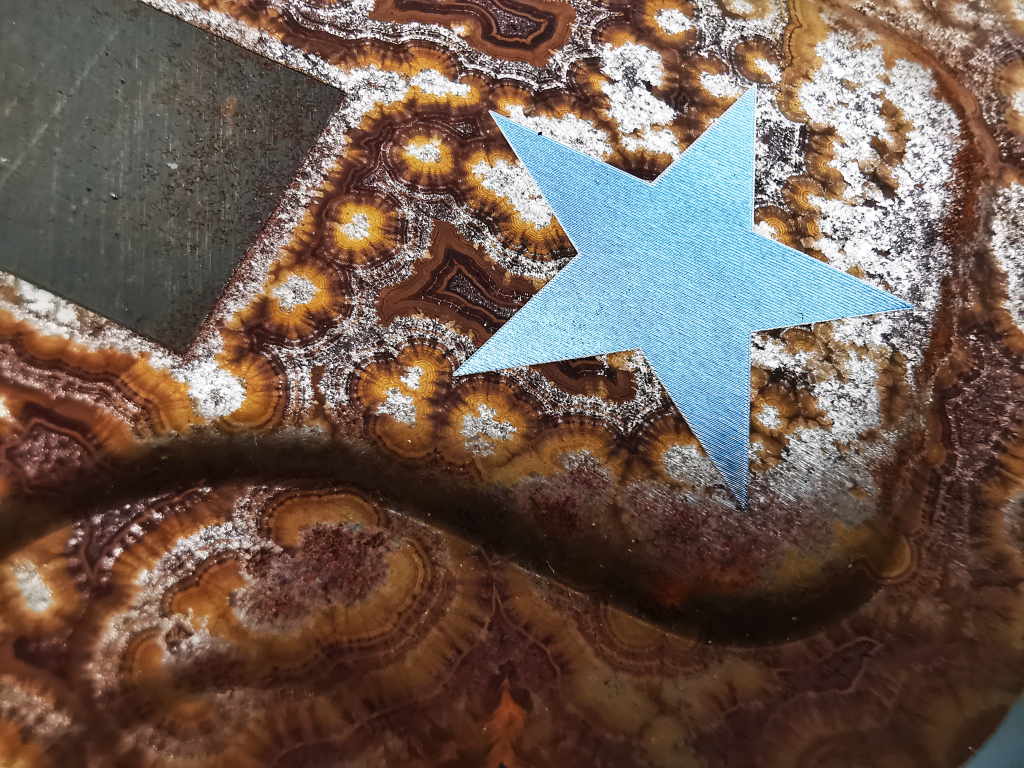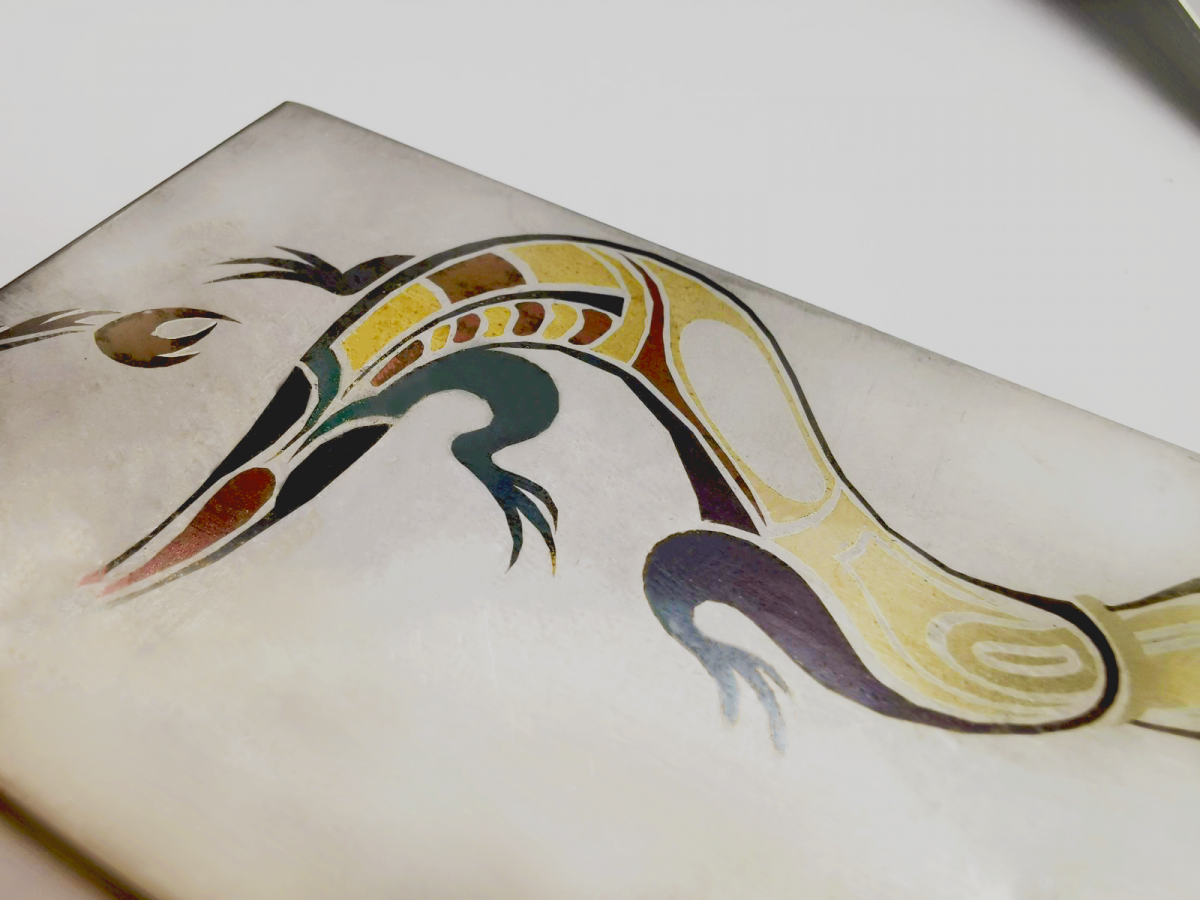
Color laser marking
Color laser marking is not a widespread technology, but rather interesting from a design point of view. It is suitable for creating patterns and inscriptions in different colors. The colors can be created using several methods, all that is needed is the right raw material and setting. During the laser treatment of certain metals (e.g. stainless steel), an oxide layer is formed, which results in different shades of color. Different colors can be achieved by changing the thickness of the oxide layer and the parameters of the laser. The temperature changes caused by the laser can create various color shades, this procedure can be used especially for metals. Different color coatings can be created on aluminum surfaces with an anodic oxidation process. After applying special coatings or paints with surface treatment methods, the laser removes a certain layer of the coating so that colors become visible. For many materials, special coatings are used, which, after treatment with a laser, show different colors in the evening of the specially coated material. Of course, not only the raw material is decisive during the procedure, but also the programming. Thanks to the software, any graphic, pattern, text can be created and we can create several colors.

Laser marking can be used on various materials:
Metals:Stainless steel, aluminum, titanium and other metals that respond well to laser heat treatment and oxidation.
Plastics:Plastics with special additives that allow color markings.
Glass and ceramics:These materials can also be laser machined, although color markings may be more limited here than for metals.
Colored marking offers many advantages, it is just as durable as simple marking, resistant to wear, chemicals and drastic changes in temperature. High-resolution, detailed markings can be easily created based on vector files, and a print image can almost be converted. The process is fast and fully automated, as with other laser technologies.

Color marking for metals:
In the case of metal, the heat and energy of the laser creates various chemical and physical reactions on the surface. Colors can be achieved using different methods, the first being oxidation, heat treatment and material coatings.
Oxidation:
In the case of stainless steel, when it is treated with a laser, an oxide layer is formed, with which we achieve different shades of color. The colors can be changed by changing the thickness of the oxide layer and the parameters of the laser (e.g. intensity, speed, frequency).
Heat treatment:
The temperature changes produced by the laser can create various color shades on the surface. Changes in the crystal structure and surface of the metal caused by heat cause the appearance of colors.
Material coatings:
Special coatings are applied to some metals, which, after being treated with a laser, show different colors. These coatings can be oxide layers, paints or other special materials.
Applicable metals:
Stainless Steel:One of the most commonly used metals for color laser marking, as it can produce different colors through oxidation.
Titanium:It also responds well to laser heat treatment and can be obtained in different shades.
Aluminium:Colored markings can be made on it with special coatings and oxidation processes.
Copper and brass:These metals can also be suitable for color marking, especially with the use of special coatings.
All in all, color laser marking is a technology that provides a unique solution that is durable and precise. It is mainly used in some industries, where metal surfaces are visible elements, such as railings, interior of elevators, wall surfaces are interior design elements.

